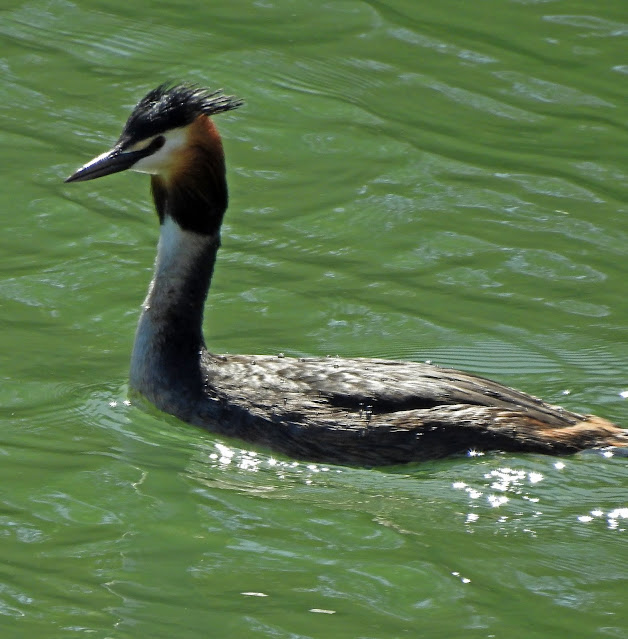The great crested grebe, Podiceps cristatus, is a water bird of the grebe family, notable for its striking black and white plumage and elaborate courtship displays. It is the largest grebe species found in the Old World, with some larger species in the Americas.
Adults are unmistakable in summer with ornate head and neck decorations. In winter, they are whiter than most grebes, with a distinctive white above the eye and a pink bill. Juveniles can be identified by their black and white striped heads, which they lose upon reaching adulthood.
This species prefers vegetated areas of freshwater lakes for breeding.
The great crested grebe has three subspecies: P. c. cristatus in Eurasia, P. c. infuscatus in Africa, and P. c. australis in Australia, Tasmania, and the South Island of New Zealand. The European subspecies migrates from colder regions, while the African and Australasian subspecies are mainly sedentary.
The great crested grebe is an excellent swimmer and diver, pursuing fish underwater. Its mating display is particularly elaborate, involving synchronized dances and poses.




























%2020.jpg)
%2021.jpg)
%2020.jpg)



%2020-topaz-upscale-1.5x.jpg)
%2021-topaz-upscale-1.7x.jpg)